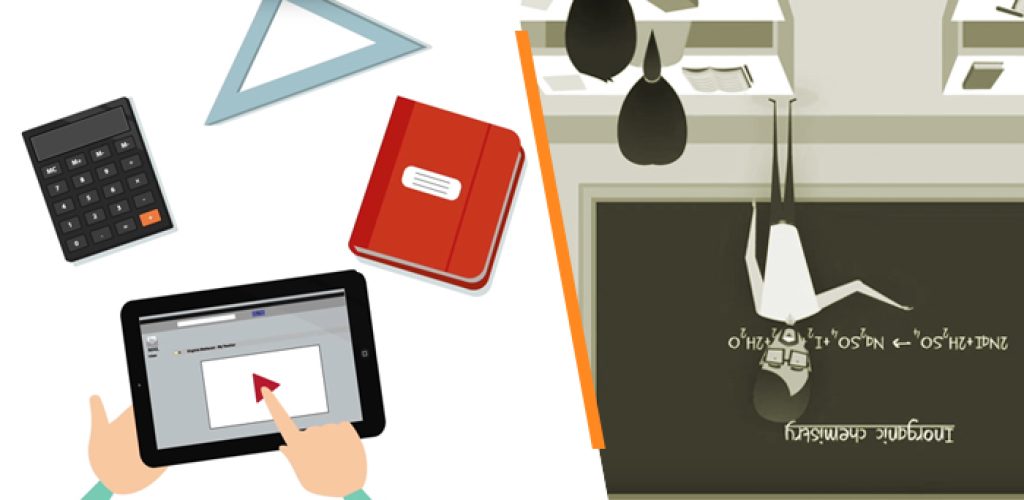Like many other educational innovations, the flipped classroom began with the recognition of a problem with the traditional way of teaching. To understand the potential benefits of a flipped classroom, then, it may be helpful to understand the problem it was trying to solve.
So consider the traditional “unflipped” classroom. In that approach, the instructor delivers a lesson to the students, and then the students practice on their own. When the students have questions, they come back to the instructor or his or her assistants.

There’s something to this approach: the instructor gets the students started, the students then practice what they have learned, and if they have trouble, they can come back for more help.
This is a reasonable approach, and it can work well in many contexts. But it has drawbacks. Typically, the instructor winds up giving basically the same lesson every time, which can be valuable but is not tailored to the needs of any particular student. Instructors tend to teach to the middle, and so the unprepared students are lost from day one, and the prepared students are punished by having to listen to material that they already understand. While the students can ask for extra help, many don’t, and the ones who don’t are often the ones who have the greatest needs in the first place. If they do ask for help, they could get it, but the instructor’s availability is often limited by the fact that he or she is responsible for delivering all those classroom sessions. There are only so many hours in the day.
Even given those limitations, the traditional approach became traditional because it did work for a substantial number of people. Also, it was hard to see an alternative. Ideally, each student could get personalized instruction from someone who was tuned in to his or her needs, but there aren’t enough teachers in the world for that. So the approach was to use instruction time to cover the most important topics in a way that was likely to be meaningful to the greatest number of people. The middle range of students got the most appropriate instruction. The high achievers might be a little bored, but they tend to succeed no matter what. The at-risk students who never asked for extra help were not well-served by this system, but the thought often was that these people are the hardest to reach anyway, and extra time devoted to them would take time away from the students who were more likely to “get it.”
This might make instructors and instructional designers sound horribly callous, but you can’t be everything to everyone at once. Live instruction designed for a large group of people with diverse needs is going to involve some tradeoffs. I saw this when I wrote test preparation courses for the SAT, ACT, and GMAT. We typically had about 8-12 hours of classroom time dedicated to math topics that the students learned over many years. When designing the lessons, I picked the topics that I thought that most people needed, aimed the content where most people were likely to be, and tried to create resources outside the classroom to help people who had more trouble with the basics or had very aggressive goals. Those courses weren’t perfect, but they did a good job acting given the requirement that the classroom lessons attended by everyone would be the primary focus of the learning experience.
The flipped classroom challenges those assumptions. In the flipped approach, the initial mode of learning is individual study, typically with online resources, without an instructor being present. After the student has done some work and has specific questions, he or she connects with an instructor to work on his or her specific issues or works on a project to apply those concepts. The flipped classroom does not replace instructors, but it does reallocate their time. Live lectures are replaced by technology-based instruction (often videos, interactive exercises, and quizzes). The time that is freed up thereby goes to personalized instruction. The idea is to have instructors spending their time to do the things that instructors do best. Instructors giving lectures sometimes feel as though they are on autopilot, so why not actually put those lectures on autopilot and have the instructors help in other ways?
The skeptics among us are probably reading the above description and thinking that it is perhaps a little too optimistic. In fairness, a flipped classroom needs a lot to operate successfully, such as:
1) Excellent instructional resources for the initial learning experience. This might sound obvious, but it’s worth stressing that the quality of the flipped classroom depends on the quality of the content that they see before they get to the instructor. If the content is engaging and relevant,then the students are more likely to stick with it long enough to be able to come in with meaningful questions. If the content is flat, then students will tune out, and there will be no instructor on hand to notice.
2) Meaningful diagnostics that can tell people which technology-based content they need and what kind of progress they are making. By the time the students get to the instructor, the students should know where they need help. So they need to get to appropriate material in the first place, and when they get there, they need to be able to tell how they are doing and what else they need to succeed.
3) Instructors who excel in a 1-to-1 environment. Some instructors are better in a lecture format as opposed to a more interactive format. In the flipped classroom, the latter is the key skill.
The story of the flipped classroom is still being written, and new patterns may emerge. We may see the usage and effectiveness of the flipped classroom change as technology changes. After all, it was technological advancements that made it possible to build the educational resources needed to get the flipped classroom going. Further innovations could help make the model even more effective.
We might find that the flipped classroom works better for some students than others. Self-starters are more likely to put in the initial unsupervised work, whereas people with weak study skills might disengage early without the instructor’s attention. Of course, people with weak study skills are more likely to fail in any educational environment. Any educational approach has to assume some buy-in from the users.
Finally, the flipped classroom might be better with some subjects than others. Offhand, one would think that self-study followed by troubleshooting would be more effective in quantitative and hierarchical subjects that have clearly-defined learning objectives and opportunities for unsupervised practice. So perhaps it will work better in math as opposed to literature. But if it works well anywhere, it will be at least a partial success and a validation of the notion that we can improve on the most well-established educational practices.



